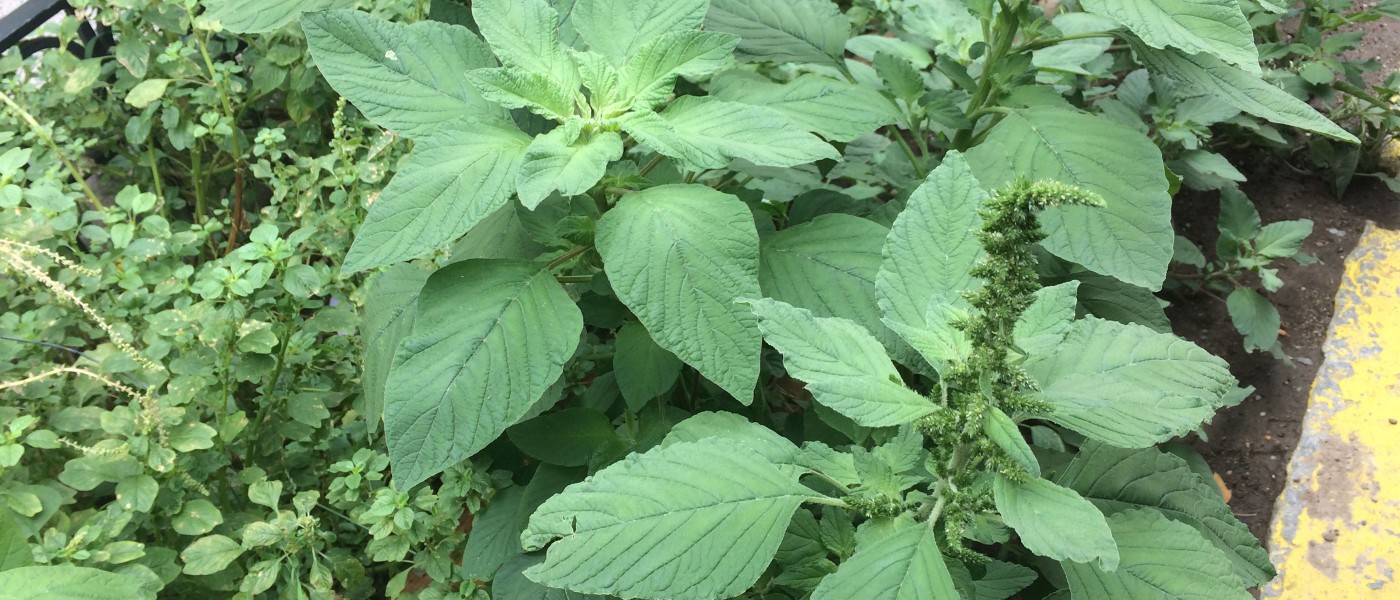Weed of the Month: Pigweed
Pigweed may be aggressively pulled from gardens and tree beds in the United States, but it's lovingly cultivated in other parts of the world. Amaranthus retroflexus is known by many other names besides pigweed, including green amaranth, redroot amaranth, careless weed, tumbleweed, and callaloo. Like other members of the amaranth family, it has a storied history and an important role as a food staple in many cultures.
The plant itself is rather unremarkable looking, with dark green, pointed leaves oppositely arranged along a tall stem and inconspicuous green flower clusters. Its designation as a weed lies in the fact that each plant can produce upwards of 100,000 seeds, ensuring many generations per season.
The seeds themselves are rich in protein and have a higher protein content than rice, sorghum, or rye. They can be easier to digest than soy, wheat, or dairy and can be ground into a meal or popped like corn! Another species, Amaranthus cruentus, is used to make a sweet snack sold on the streets of Mexico called alegria, or happiness. I make this with students every fall, and while the popping is tricky, the results are delicious.
The Aztecs grew Amaranthus cruentus for both the seeds and the dark-red flowers, which were used ritualistically in ceremonies. The Spanish conquistadors destroyed the fields and banned amaranth production, ostensibly as part their campaign to convert the population to Catholicism. Or perhaps they recognized how important it was as a food source for a formidable opponent.
The leaves of pigweed are also incredibly nutritious. They're high in vitamins A and C and folate, as well as calcium. In Jamaica, pigweed is known as callaloo and is a culinary staple. Here in NYC, you can find it for sale in West Indian markets. In can be stewed, sautéed, tossed into a stir-fry, added to an omelet—there is no wrong way to cook pigweed! Recipe references can be traced to India, Nepal, Indonesia, Guatemala, the Philippines, China, Nigeria, Uganda, Kenya, Greece, Lebanon, and Brazil. Pigweed has been flourishing and feeding humans internationally for centuries.
Finally, while various amaranth species are often considered among the “ancient grains” that are making a comeback, Amaranthus retroflexus also has real potential as a food crop of the future. First, it has developed a resistance to the common weed-killing pesticide glyphosate (Roundup), which means that it can compete and thrive in our increasingly toxic agricultural fields. Second, pigweed performs a particular type of photosynthesis called C4 carbon fixation. C4 plants are able to more efficiently absorb atmospheric carbon dioxide than C3 plants and are adapted to higher temperatures and drier conditions. May we all be as prepared to handle climate change as pigweed!


